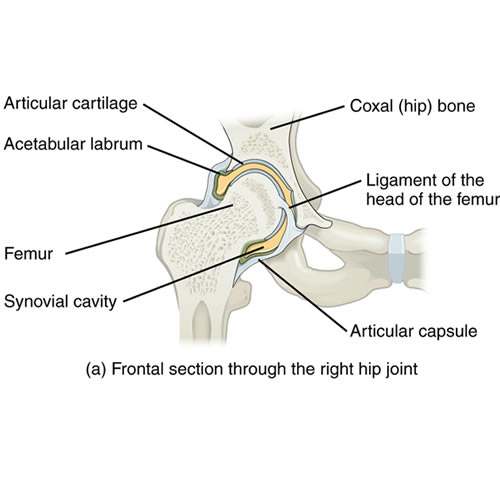 Hip replacement surgery is the most common type of joint replacement surgery across patients in the United States. When in ideal condition, this ball-in-socket joint allows for the round head of the femur (the ball) to glide against the labrum that lines, protects, and supports the acetabulum (the socket).
Hip replacement surgery is the most common type of joint replacement surgery across patients in the United States. When in ideal condition, this ball-in-socket joint allows for the round head of the femur (the ball) to glide against the labrum that lines, protects, and supports the acetabulum (the socket).
The hip joint is also supported by a complex of muscles, ligaments, and tendons that allow for proper, smooth function of the hip joint. However, when the structural components of the hip are degraded or compromised, a hip replacement surgery may be necessary. Physical therapy plays an extremely important role in the success of a newly-placed hip joint.

Physical Therapy and Hip Replacements
Many patients partake in pre-surgical physical therapy to prepare the hip’s supportive muscles for the surgery. The efficacy of this practice in the reduction of post-surgical complications is well-supported by research. A 2014 study on pre-surgical physical therapy for total joint replacements demonstrated a 29% decrease in post-acute care such as inpatient rehab and reliance on home health care in patients who enrolled in pre-surgical physical therapy [1].
Rehabilitation efforts will resume or begin immediately after the surgery with the intention to mobilize the joint as quickly as possible. Patients begin with walking exercises that allow for the completion of daily activities and restore gross function. In the weeks and months following surgery, physical therapists will help to ensure strength and flexibility at the hip joint itself as well as within the surrounding structures [2].
The total duration of the post-surgical rehabilitation process cannot be estimated based on the joint in question alone. Factors include, but are not limited to, age, integrity of the surrounding bone, muscle strength, diet, adherence to the physical therapist’s treatment plan, and willingness to engage in home exercises.
Patient Perspective
Below, we took the opportunity to interview our own Dr. Charlie Bissell about his personal experience in getting his hip replaced. Check out this Q&A pooled from patient questions about Dr. Bissell’s experience and expertise pertaining to the process of a hip replacement.
Why did you need to get your hip replaced?
What did you try before getting your hip replaced?
What made you finally decide to go through with the hip replacement?
What was your recovery process like following your surgery?
What advice would you give to a patient thinking of getting a hip replacement?
What was your biggest challenge in getting your hip replaced?
Are you happy you had your hip replaced?
References:
[1]https://journals.lww.com/jbjsjournal/Abstract/2014/10010/Associations_Between_Preoperative_Physical_Therapy.11.aspx
[2] https://my.clevelandclinic.org/health/treatments/17102-hip-replacement
Image: https://radiopaedia.org/cases/44015/studies/47529?lang=us&referrer=%2Farticles%2Fhip-joint-1%3Flang%3Dus%23image_list_item_20993309
